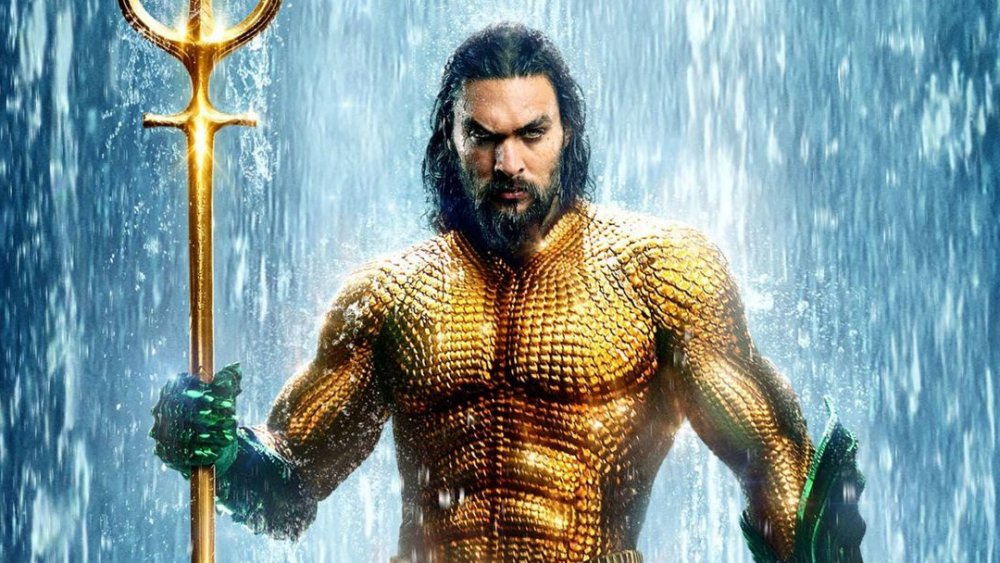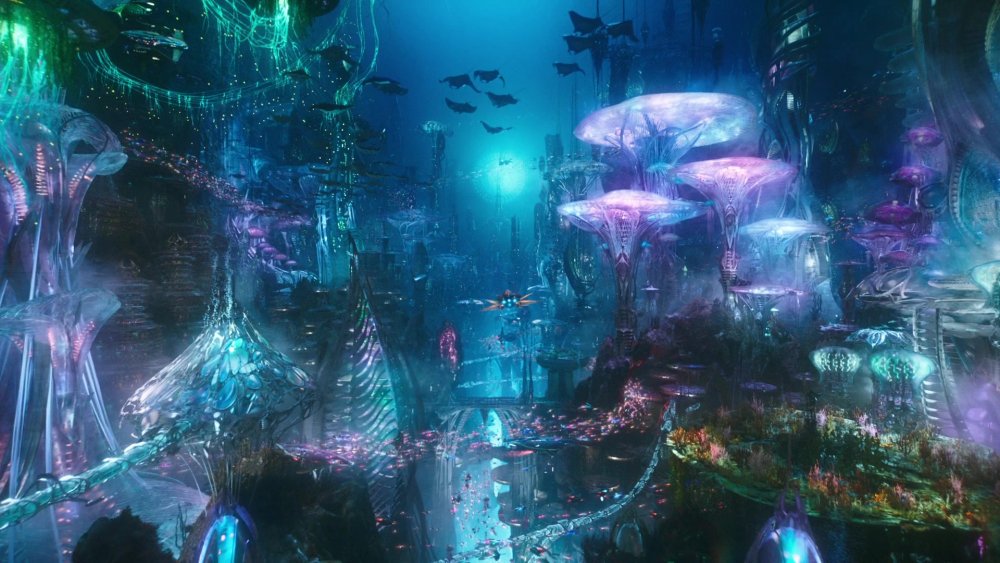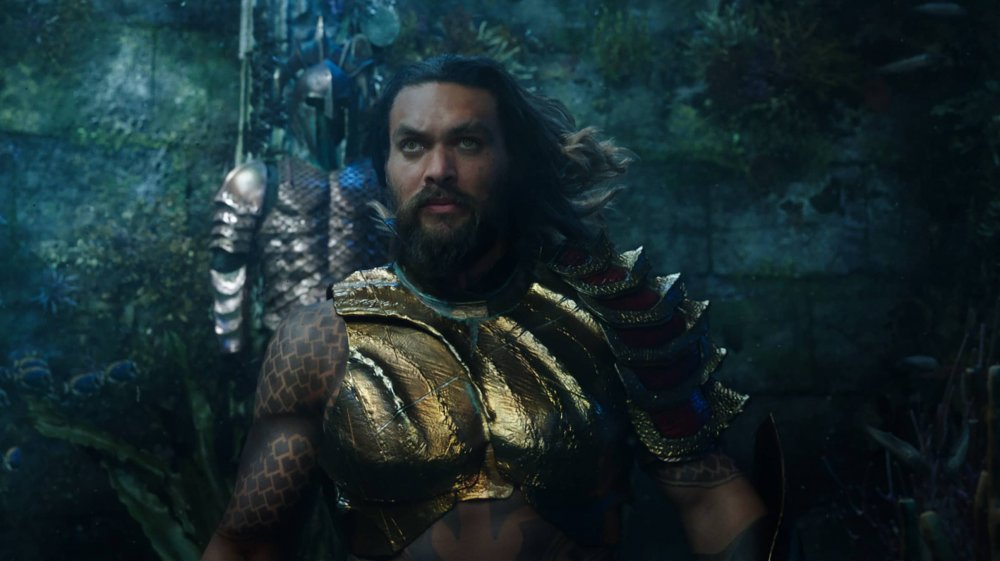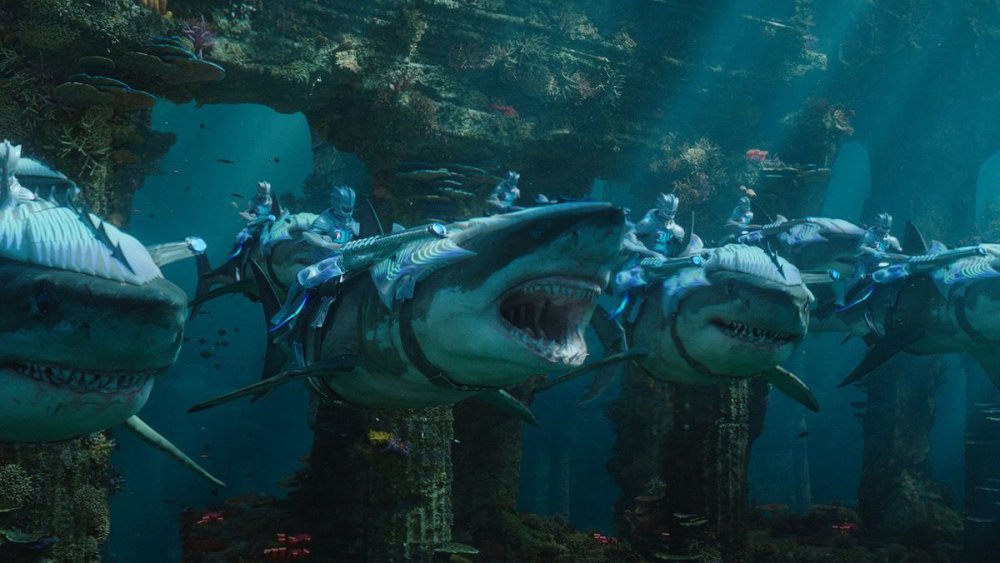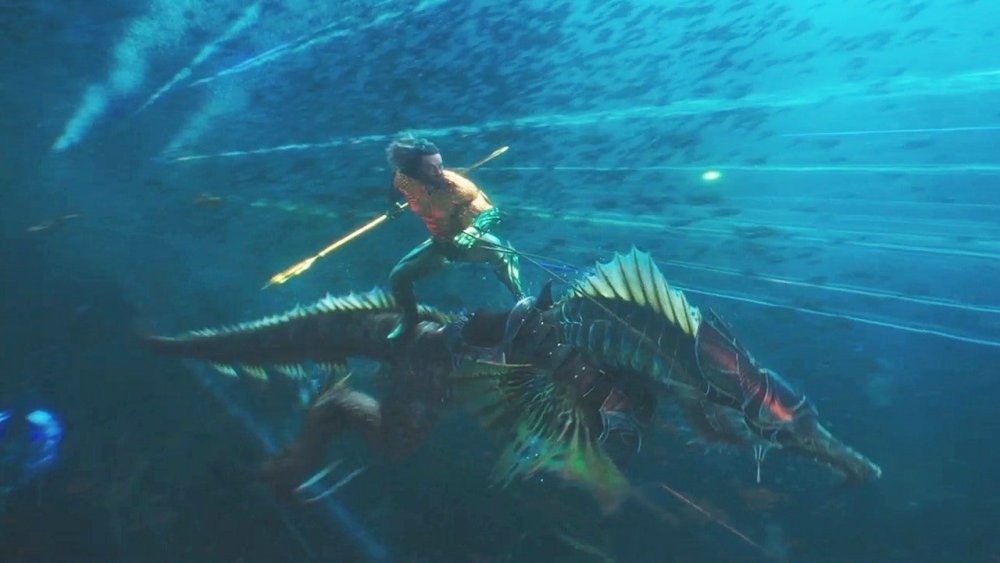The Truth About How They Created Aquaman's Underwater World - Exclusive
In December 2018, Warner Bros. and DC Films' Aquaman made a literal splash in cinemas. With the dashing Jason Momoa and his famous beard leading the feature, directed by horror movie icon James Wan, the super-soaked superhero movie raked in over $1.1 billion at the worldwide box office (standing as the highest-grossing DC Extended Universe film even to this day) and earned decently solid reviews from critics and fans alike. One of the best things about Aquaman, apart from its status as a superhero origin story outfitted with an A-list cast, was its lush underwater visuals — described as "transcendent," "unlike anything we've ever seen before," and "gorgeous" even by those who weren't 100-percent sold on the narrative.
Looper had the chance to speak with Bill Brzeski, a venerated art director and production designer who's worked on films like Matilda, Stuart Little, The Hangover, Iron Man 3, Furious 7, and, of course, Aquaman. During our conversation, Brzeski revealed what it really took to create Aquaman's stunning underwater world.
He first explained that "a lot of scenery" was built for Aquaman, which is what enjoys doing due to his theater background. A prominent set that Brzeski and his team crafted was the Italian village in Sicily, which was destroyed during the chaos between Aquaman, Mera (Amber Heard), and Black Manta (Yahya Abdul-Mateen II).
"I'm more suited, I think emotionally, to not going out and finding a location, but actually building the whole location. Like in Aquaman, that whole Italian village that we destroyed [...] We were going to do that in Sicily, but we couldn't get the rights to do it in Sicily because it was too much work and damage to the town," Brzeski said. "So we just said, 'Let's build it.' And so that's what we did — we built that whole town."
Things were markedly different when it came to creating Aquaman's underwater world, however.
Pairing practical with digital and doing proof of concepts for Aquaman
As Brzeski told Looper, the production design team certainly put a ton of effort into building physical scenery, but they also implemented "proxy scenery that was effected digitally." He explained, "I mean practical in a sense up to a point and then we extend it [...] and especially the effects and explosions and all that kind of stuff are more handled in the digital sense now."
When building a world digitally, especially one that's underwater, it's important to carry out what's known as a proof of concept — a realization of a particular method one plans to utilize in order to assess if it will actually work. The folks at Warner Bros. were especially concerned with things going smoothly, and there was a decent amount of pressure to ensure that Aquaman's digital effects looked as natural as possible.
"We kind of did that in Aquaman too, because there were a lot of issues with, 'How are you going to do all this water?' That, too, had to be kind of worked out. Again, it's been done, but it's not [been] done for a whole movie [...] Would it fall apart after a certain point?" said Brzeski. "Whey were scared to death at Warner Bros. about Aquaman, and rightfully so. I was kind of scared, too. I mean we knew how to do scenery, but, to have guys swim under the ocean in a convincing sort of way? It took a lot of rigging. [It was] a ballet on wires, basically."
Thankfully, as Brzeski noted, a stunt team in Australia that helped out on Aquaman built "a whole stage just so people could learn how to swim in there."
Ensuring Aquaman's underwater world was different from the dark, gritty DCEU
To make a movie's world feel not only real, but also unique and exciting, filmmakers must make specific decisions regarding the way things look and operate. In the case of Aquaman, that meant turning to other movies in the DCEU and figuring out a way to stand separate from the aesthetics of those films. Director James Wan settled on a singular vision: "a blue sky movie," as Brzeski described it to Looper, similar in style to James Cameron's azure-laden sci-fi epic Avatar.
"We've looked at all the other superhero movies and the biggest rap that DC was getting is that their movies were dark and dirty and depressing — the whole Zack Snyder stuff," Brzeski began. "That was a big [question]: what was Aquaman going to be? It was going to be dry, smudgy underwater? [James] would say, 'Listen, I want to do a blue sky movie. The movie has to be — I want it to be beautiful. I want it to be like Avatar. I want it to be really key colors. A beautiful world under the ocean, when they're outside the ocean, it's a beautiful sky. Beautiful, everything about it. It's an uplifting experience.'"
He noted that Wan's amble was "a mantra" the Aquaman creative team got "all the way through" production. "We all kind of fell into it and I felt the same way. But it was the best way we could combat the whole Zack Snyder thing," said Brzeski, who clarified that Snyder is "a great filmmaker" who was simply getting backlash for the too-serious Justice League at the time.
Creating a full society for Aquaman
Another important aspect of Aquaman's underwater world was deciding how the people within it would look and act. Brzeski collaborated with Aquaman's costume designer Kym Barrett to make these crucial decisions, coming up with the visuals for the seven underwater kingdoms including and beyond Atlantis.
"[We] spent a lot of time working on [the] society — how could people actually live under water? How would it work, and how do we create light and energy? And it was quite a challenge in that sense of like, who were the different people in Atlantis? And there's seven kingdoms, so it's not just Atlantis," Brzeski shared. "We had to figure out Xebelians, the Trench people, all the different layers of the Aqua society and how come they didn't come on land [...] Of course, it's rather silly because you can't live underwater, you know that. But we made it so you kind of believed it."
Aquaman fans will get to learn a whole lot more about the Trench people from the film, as Warner Bros. is developing a spin-off film all about them. (Aptly, it's currently titled The Trench.)
Crafting the underwater world in Aquaman was a true team effort
Brzeski was quick to give kudos to everyone who helped realize the vision for Aquaman's universe below the surface of the sea. As he noted, the end product wasn't the result of just a single group of people's efforts — many talented creatives aided in the process.
"I had some great sketch artists. We had people all over the world working with us," said Brzeski, who then revealed that what fans saw on screen was what was pitched to Warner Bros. ahead of production.
"The most fun part about it is that the movie you saw was presented — built on paper and presented — to the studio and they bought it, and that's the movie we made," he said. "It came out the way we did from the first presentations. And I was really excited about that because so many times you start a project and it goes in some direction and by the time it comes out you don't even recognize what you were working on. That was not that case in that movie."
